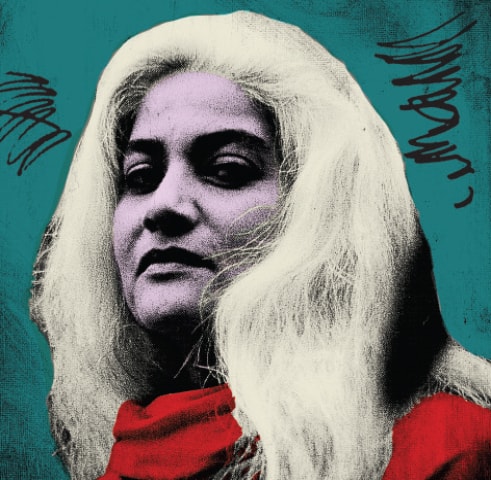
From 1954 to 1999, the advertisement of the Marlborough man — a rugged, lean cowboy smoking a cigarette — became the symbol of masculinity. The strong and silent Wild West man, as Lydia R. Cooper suggests, “identifies himself as that other against all others” — the wilderness, the native tribes and women. To the post-World War II American culture is also ascribed, by Daniel Wickberg, the term homophobia, first coined by the psychologist George Weinberg. Literally meaning the fear of sameness, homophobia was described as a disease as well as an attitude.
Wickberg places this against the backdrop of the Jewish holocaust, which generated a collective guilt in Western culture of tacitly condoning extreme prejudice. The post-war years saw all sorts of liberalising movements — in particular, the civil rights movement, women’s rights and gay rights. R.D. Laing even suggested that schizophrenia was the true voice of freedom in an insane and restrictive world.
As with so many prisms adopted across the world from American cultural perceptions, definitions of masculinity also universalised. From heterosexual to metrosexual, male identity seems to always be discussed in a context of sexuality, politics or power. The stand-alone understanding of masculinity is lost. Traditional non-Western societies set aside their own gender traditions to adopt Western definitions of gender disseminated through film, literature and conference papers.
Pakistani men get rather bad press for being macho, sensitive as a bull in a china shop, aggressive, trampling over the rights of their wives and daughters and controlling the destiny of their sons. Psychologist Nathaniel Lambert quotes tennis player Martina Navratilova as saying: “Labels are for filing. Labels are for clothing. Labels are not for people.” He says even if the stereotype may be correct, it can still be emotionally damaging, trapping the person into reinforcing the label.
Blurring or crossing gender lines is an old tradition. Ghazal poets use the androgynous mahboob (lover) and male poets may even depict themselves as female lovers.
Diving a bit deeper into Pakistani culture, its language, poetry and relationships, the picture becomes more complex. Most intriguing is the male ease of crossing gender. In one of Imran Aslam’s Grips plays, a character asks why the Urdu words mooch (mustache), darhi (beard) and fauj (army) have a feminine gender when they are clearly descriptive of a man’s world. If one accepts that social attitudes are reflected in language then what does this say about masculinity in Pakistan?
Along with Shah Hussain, smiling unrepentantly at being acquitted of stabbing his class fellow, Khadija, 23 times, the Pakistani male is also a soldier called Phool Khan; he is also the owner of city buses who instructs his conductors to not charge khwaja saras (transgender) because they already have a tough life. He is a young man in Mehboob Cloth Market who has no qualms about draping a sari so his client can select what she should buy. He is a taxi driver who is determined his daughters should study and have careers of their own.
Boys are said to be socialised into restraining emotions except for anger, but many Pakistani men cry in a Muharram majlis, love watching sad films and sing romantic songs. When two policemen with AK 47s on their shoulders can walk down the street holding hands, we all know it’s simply a sign of friendship or camaraderie. Nilander Chatterjee observes that men or boys who do not speak English naturally hold hands.
Blurring or crossing gender lines is an old tradition. Ghazal poets use the androgynous mahboob (lover) and male poets may even depict themselves as female lovers. Amir Khusro’s Chap tilak, always presented by male qawwals, depicts Khusro as a woman in love with his Sufi master Nizamuddin Aulia. The poet Sanaullah Daar took the takhalus or pen name of a woman, Miraji. The vai singers at the shrine of Bhit Shah recite the verses of Shah Latif Bhitai in both male and female voices. Shemeem Burney Abbas, in her book The Female Voice in Sufi Ritual notes the deep respect and admiration for women in Urdu, Purbi, Hindi, Punjabi, Saraiki and Sindhi Sufi poetry, and kinship with women and their work such as husking, grinding, spinning and weaving, and honour bold female lovers such as Heer, Sohni, Sassi, Layla, Mira Bai. The Bheel male fire dancers of Sindh dress as women. Khwaja saras or transgenders are not only an integral part of society but regularly stand for national elections. Pakistan is one of only six countries — four of which are South Asian — which officially acknowledge a third gender.
Many names are gender ambiguous such as Talat, Shamim and Akhtar. Traditional Pakistani male and female clothing is not that dissimilar — the lacha and lungi, the shalwar kameez with a chaddar. Almost all male actors of South Asian cinema have dressed as women on screen without any dent to their manly image. Lollywood cinema scriptwriters and songwriters have been male, but relate to the emotions and dialogues of women with great sensitivity and understanding.
It is difficult to reconcile these observations with the very real cruelty against women which also sadly exists in Pakistan. Clearly there is disconnect between the male public political self and an internalised tenderness that only finds a voice through cultural expression.
Durriya Kazi is a Karachi-based artist and heads the department of visual studies at the University of Karachi Email: durriyakazi1918@gmail.com
Published in Dawn, EOS, June 15th, 2018














































